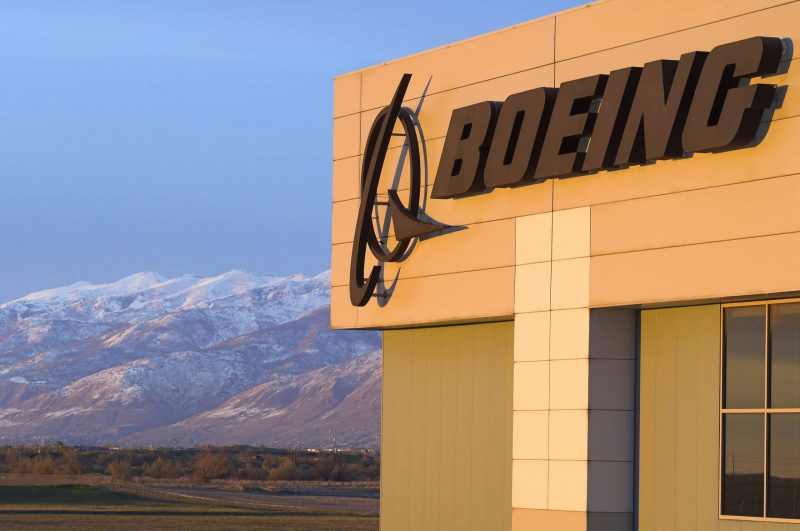The US aircraft manufacturer Boeing has been in a constant crisis for many years because scandals are caused almost “regularly”. Now the CEO and the head of the civil aircraft division are stepping down. The pressure from all sides seems to be too great. How was Boeing able to transform itself from a model company into such a veritable “pile of chaos”?
For decades, Boeing aircraft were considered the epitome of innovation, reliability and safety. Innovation means that although one or two new products have been brought onto the market, they have been rather conservative in many respects and have left the “teething problems” to smaller manufacturers such as McDonnell Douglas or Lockheed Martin. Boeing then followed suit when the technology was mature. For example, they stuck to the three-man cockpit for a comparatively long time and even delivered B767s with a type of panel for flight engineers to an Australian airline upon special request.
While the former box office hit B727 was dependent on flight engineers, this is no longer the case with the successor B737 from the start. Significantly more B737s have now been built in various variants than B727s. For many airlines, the Boeing 737 is the workhorse on short and medium-haul flights. Of course, there were fatal crashes even before the Max variant, but its competitor Airbus does not have a clean slate with the A320 family either.
Turning point: takeover of McDonnell Douglas
There was a striking turning point in Boeing's company history when it took over competitor McDonnell Douglas in the 1990s. The company that changed its abbreviation from “DC” to “MD” because it had a miserable reputation due to a series of accidents with the DC-0 and DC-10 series. There are certain parallels to the Max misery, because the DC-10 was also temporarily grounded and the manufacturer initially tried to deny the defects and blame the pilots. Boeing also resorted to exactly this strategy after the fatal accident involving the Lion Air B737 Max 8, and even shortly after the crash of the B737 Max 8 they still did not want to admit glaring deficiencies. They also kept a lot of secrets from customers, authorities and even their own employees. This is exactly what McDonnell Douglas had experience with.
While MD's military sector was much better off than Boeing's in the 1990s, things were completely different in the civilian sector. For a long time, McDonnell Douglas “rested” on its laurels in the form of former bestsellers and recognized too late that more and more customers were moving towards Boeing and Airbus. In particular, the competition had models that used less fuel. Little by little, MD found itself in a difficult situation and then it merged with Boeing. Formally it was a takeover by the last-mentioned company.
McDonnell Douglas' civilian program was quickly abandoned. Only the MD-95 was brought onto the market as the B717 and built for a few years. But there is much more to Boeing than just the former MD logo in the Boeing company logo. Yes, in fact, after the merger, the McDonnell Douglas logo was integrated into Boeing's CI and is still an integral part of the logo today.
MD teams have gradually taken over internally
Internally, it was by no means a takeover of McDonnell Douglas by Boeing. The fact that various civilian production facilities were either closed down or were commissioned with the final assembly of Boeing models has also led to an enormous number of former MD employees pursuing careers in the joint company. Many key positions gradually went to former Mc Donnell Douglas employees and of course they let “their friends” step up. It is not without reason that “Ex-Boeing” complains that an internal takeover of Boeing by McDonnell Douglas has taken place.
As a reminder: MD was known for being able to develop new patterns relatively quickly and bring them to market if one wanted to. The corporate culture that not everyone has to know everything or that what you can't see doesn't exist and so on was transferred to Boeing after the merger. It is precisely this approach that is massively disadvantageous for the company, which was once based in Seattle and currently has its official headquarters near Washington. You don't need to be a particularly expert to understand that real cliques are responsible for top management not getting access to blatantly important information. Why would you say something that could get you in trouble and potentially jeopardize your job? The so-called Just Culture, which is an important part of aviation security, should actually be practiced in aviation. However, this was not the case at McDonnell Douglas for a long time and it is now also the case at Boeing, otherwise the FAA would not be so critical of quality assurance and operational processes. The B737-Max was a very quick response to the Airbus A320neo…
Actually, a plane should only take off with passengers if there is no doubt that it might not be unsafe. In a sense, McDonnell Douglas left “flight testing” to the free market, because some series that were later considered extremely safe had many incidents and total losses in their first years. But how was that possible? Well, part of the overall strategy was a well-disposed supervisory authority and that was deliberately “undermined”. Care was taken to specifically place our own employees in the most important positions and to hope that they would then be well-disposed towards their former employer. This was quite successful. Actually, this should never have happened again in the USA, but in the aftermath of the B737 Max accidents it has come to light that the work of the FAA is definitely worth questioning and that a significant number of government employees previously worked for the Boeing Group .
Quality defects still not under control
But everything comes to light at some point. The Dreamliners had massive “quality defects” in the early days. Boeing has actually achieved a very big and innovative success with this type of machine. However, the appearance is a little clouded due to the “teething problems” that the series suffered from at the beginning. Things are looking massively worse for the 737 Max series and at this point the role of the FAA can certainly be critically questioned.
Following the two fatal accidents, the aircraft were not allowed to take off for a long period of time. An enormous number of defects came to light and cost CEO Dennis Muilenburg his job. Of course, it wasn't just the many "quality problems", but also the strategy of denial and cover-up that was used at the beginning of the "Max crisis". In any case, before re-certification, the FAA claimed that the Max series was the best-tested aircraft in the world.
Apparently not, because the quality defects that came to light in the wake of the recent Max incident at Alaska Airlines should never have occurred in this form. Especially since Boeing technicians recently worked in the affected area of the machine and, according to the NTSB, the records can no longer be found. Boeing does not know which mechanics worked in this area of the affected Boeing 737-Max-9. Manufacturers and MRO companies are actually obliged to document such things precisely. Actually, because it's obviously just another chapter in the chaotic history of the B737 Max series.
Boeing boss throws in the towel
The B737-Max-8 (including the sub-variant 200) and -Max-9 are currently certified and are used commercially by many airlines. Versions -7 and -10 do not yet have FAA approval, even though the manufacturer has repeatedly said that it will only be available for a few weeks. What's stopping the FAA from approving these two versions? You will probably have your good reasons, but you don't want to share them completely with the public (yet). In any case, due to the Max 9 incident, the subsequent prohibition on expanding the production rate of this series and numerous internal problems found by FAA employees, it is not expected that the approval of the two remaining Max versions will be made. The US Civil Aviation Authority will not do Boeing the favor.
The head of the civilian division, Stan Deal, has now resigned from his position with immediate effect. His boss, David Calhoun, has also announced his retirement. He wants to leave the company by the end of 2024 at the latest. Before that, he still has a lot of work to do, because Boeing is still in a serious crisis that one thought had actually been overcome. At least Calhoun has taken over as Muilenburg's successor to lead the company out of the crisis. He has not succeeded in this so far and the announcement of his resignation seems more like a personal capitulation to the ex-MD cliques, which are not only strong in many areas of Boeing, but have also been specifically recruiting "new blood" in the form of new employees for years cliques have accepted. Only if a new Boeing boss, whatever his name is, actually manages to become the boss of his own company, will the group of companies have anything like a chance of restructuring itself and positioning itself successfully for the future. But the task becomes very difficult, because in times of crisis you can only get “real information” if you have confidence that your own job is not in danger.







 trail (for them it's free to use)
trail (for them it's free to use)